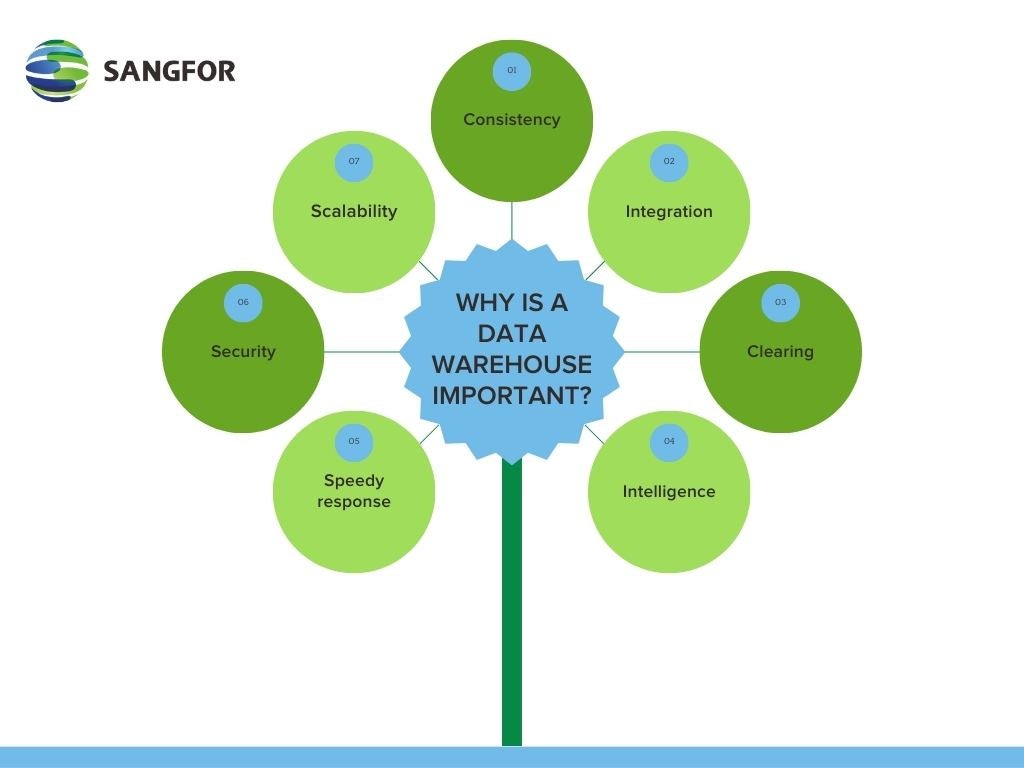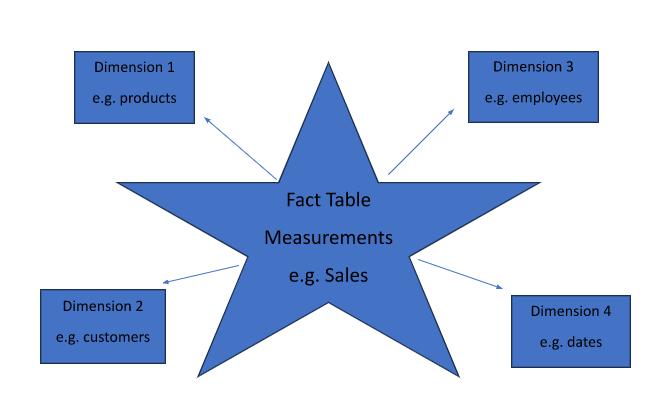Data has always been the most important element for a business in this modern age of big data. This is why the storage and processing of data is crucial. When transactions occur in a company, the data generated is stored in the database.However, this is not a long-term solution that can be accessed later on. This is where a data warehouse comes into play. In this article, we look at the data warehouse definition and why it’s important for businesses.
What Is a Data Warehouse?
Data Warehouse is a large collection of business data that is used to store, process and help organization to make business decisions. A data warehouse is more structured and stores the most valuable data assets. This forms the “single source of truth” for a company. This means that all the data found here is the most recent and authentic and can be used for data scientists or decision makers to gain insights and thus make decisions about the business.
Data warehouses are used for data reporting, analytics, and other Business Intelligence (BI) purposes. They offer a summarized version of data for this function.

Why Is a Data Warehouse Important? - Benefits of a Data Warehouse
For businesses, keeping track of your data is integral. Data warehousing is an important element for a business in a number of ways:
- Consistency – A data warehouse will ensure that everyone in the company is on the same page and has the same data to work on.
- Integration – Data warehouses give you an integrated view of data that can be used to assess information while considering all factors.
- Clearing – When data is added to a data warehouse, it often removes duplicate files and filters out unnecessary files.
- Intelligence – Naturally, one of the main functions of a data warehouse is to provide analytics based on the stored data that can improve the business.
- Speedy response – Data warehouses are generally optimized for reader access which means data analysis and response are much faster.
- Security – A data warehouse also acts as a data backup center with protocols that give access to authorized personnel only.
- Scalability – Modern data warehouses can also be expanded or reduced as needed without manually provisioning resources.

Now, data warehouses are not the only form of storing your data. As mentioned before, the database typically stores more business-related and on-hand data. This includes transactions, customer lists, product lists, and more.
For less rigidity, a company might consider a data lake instead. This is a less structured data storage solution that can collect and process any type of data in its raw form. Data lakes are often used for data that can’t be tabulated and stored as neatly. This is how the data warehouse differs from the database or data lake. It’s a lot more structured and contains more information. Now, let’s consider the other elements of a data warehouse.
ETL (Extract, Transform, Load)
This is a process used to move data from multiple sources to a large data warehouse. Data comes in many different formats in its raw phase. This is why ETL is important.
This acts as a cleansing and structuring stage for the data to be better analyzed later on. The ETL process consists of three steps:
- Extract: Raw data is extracted from multiple sources or databases. These include SQL or NoSQL servers, email, web pages, CRM and ERP systems, or flat files.
- Transform: This phase includes all the filtering, cleansing, and authenticating processes. The raw data is transformed and structured for analytics.
- Load: This is the last step where the data is loaded into the target data storage system. Usually, this is an automated stage.
Using a series of business rules, the ETL process readies the data to ensure adequate business intelligence (BI) can be gleaned from it.
The process can also be rearranged for the specific data load. Instead of ETL, it can be ELT. This means that raw data is loaded into the data warehouse before it gets transformed. Usually, this version is used for high-volume, unstructured datasets.
Data Marts
Data marts are essentially a simpler form of a data warehouse. These ensure that specific teams only have access to the information they need in a data warehouse. This simplifies data access and ensures faster data retrieval. A data mart also provides extra security in this way by allocating access to authorized personnel only. Think of a data mart as smaller houses within the warehouse that only specific people have the key to.
Instead of investing in a data warehouse, you can save time and money by using a data mart system. This is because a data mart draws data from fewer sources. These include internal operational systems, a central data warehouse, and external data.
Data marts can be dependent or independent. A dependent data mart uses the data from a data warehouse and categorizes it from there. This option is ideal for larger companies. On the other hand, an independent data mart extracts its data directly from operational sources - not a data warehouse. This is ideal for smaller businesses.
Data Lake
Data Lake stores, processes, secures all sizes/types of structured, semi-structured, and nonstructured data. AI software optimizes for business cost savings. Organization uses Data Warehouse and Data Lake depending on their business requirements. Read this comprehensive article on Data Lake to know more. If you want to know difference between Data Lake vs Data Warehouse then you can read this article to get better knowledge.
Star Schema

This is the way that the tables within a data warehouse are organized. The star schema is a general model used that looks similar to a mind map. At the center of the star schema for a data warehouse is the facts. An example would be the sales of the business.
Then, surrounding the facts are “dimensions” that add more information to the facts in the middle. These add context to what you’re looking for and organize the relevant data as needed. This makes it easier to access whatever you’re looking for a lot faster.
Data Warehouse Structure
The data warehouse architecture consists of a data warehouse, an analytical framework, and an integration layer.
- The data warehouse is the central repository for all the data. This is where everything is stored.
- The analytical framework is the software that processes the data and organizes it into tables.
- The integration layer which is the software that connects the databases together and makes them accessible to other applications.
Sangfor’s Nano Cloud can be used as an example of this structure. Through Sangfor’s platform, all resource requirements are met with Hyper-Converged Infrastructure appliances and switches. This allows for a unified visual management system.
Sangfor’s solution also ensures that a single unit provides up to 100,000 IOPS and supports linear expansion. This means you get peak performance with no bottlenecks.
Finally, the Sangfor architecture is fully redundant to ensure maximum business stability. You’ll never experience any data loss - even if the hardware fails. The XDDR solution also uses a coordinated response to contain and mitigate breaches when they happen.
Data Governance
Data governance refers to the set policies and standards for processing and storing data for a company. This is a crucial element of data storage and that factors in prominent aspects, including:
- Data Quality: This refers to the way data is processed and stored to maintain its integrity and quality. It is usually judged on six dimensions: accuracy, completeness, consistency, timeliness, validity, and uniqueness.
- Data Security: Data governance ensures that the data processed and stored has the best security protocols in place. It also ensures less risk by limiting access as needed.
- Data Privacy: Access to sets of data is limited according to the standards of data governance. Only authorized personnel can access data which improves data privacy.
Summary
Data warehouses make life a lot easier by simplifying the access and retrieval of data in a fast-paced world. Companies would benefit greatly from investing in data warehouse resources to ensure optimum efficiency. Sangfor offers Data Lake, Data Warehouse for any kind of large data stroage requirements for enterprises. Visit Sangfor aStor page to know more or contact us for more details.





